Some of the links in this post may be affiliate links.
I’ve become absolutely obsessed with the Dischidia genus. Dischidia ovata, commonly known as Watermelon Dischidia, is no exception! These cousins of Hoyas are very easy to grow and offer an unusual touch to any houseplant collection.
Although Dischidias are much less common than Hoyas, they are becoming more and more popular and more readily available.
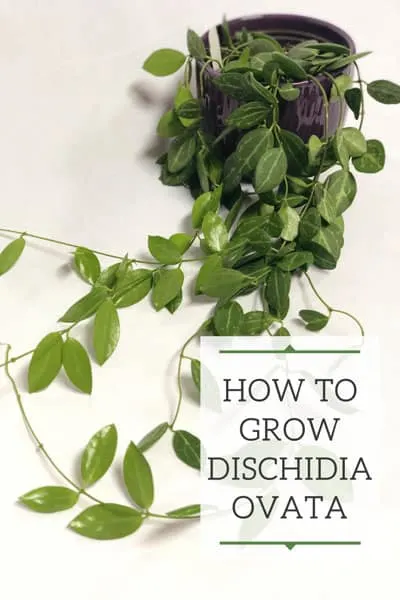
Before I get into the care of this plant, let me give you some fun facts and background that will help you in understanding this little gem.
Dischidia ovata gets its species name “ovata” because of its ovate, or egg shaped, leaves.
This beautiful trailing species is also commonly called the Watermelon Dischidia because its leaf markings resemble the pattern on a watermelon rind.
There are over 100 species of Dischidia, and these epiphytes are found throughout the tropical regions of Asia, including Taiwan, parts of China, India, and other locations.
Epiphytes are basically plants that grow on other plants, such as on tree branches.
There are many different plants that are epiphytic including the majority of orchids, bromeliads, and many others.
As epiphytes, they will produce roots along the nodes (where the leaf meets the stem) in order to absorb nutrients and water, and also to secure the plant against its host tree.
Table of Contents
Dischidia Ovata Care
LIGHT
These plants do well in a wide variety of light conditions, but seem to prefer filtered, bright indirect light. Place your plant directly in front of a window for best results.
If you do give your plant plenty of direct sunshine, the leaves will develop a red color. It is no cause for alarm however, but at this point the plant letting you know not to give it anymore direct sun!
I have my own watermelon Dischidia growing at the corner of a Northern and Eastern facing window. It gets some morning sun, and the leaves don’t have any indication of red color, and is very happy.
POTTING MIX
Dischidias in general are quite versatile in terms of potting mixes that they will grow in.
Since they are epiphytes and are used to having a lot of air circulation around them, they do best in very airy and chunky potting mixes.
As epiphytes, they also demand superior drainage and will not tolerate staying wet for long periods of time or they can rot.
Never let any of your Dischidias sit in water for extended periods of they will rot!
Dischidias can also be mounted with some sphagnum moss on cork, or any other kind of wood or bark. I will get into that in the propagation section later on!
My own ovata is still growing in the same pot and soil that it came with when I received it from the grower.
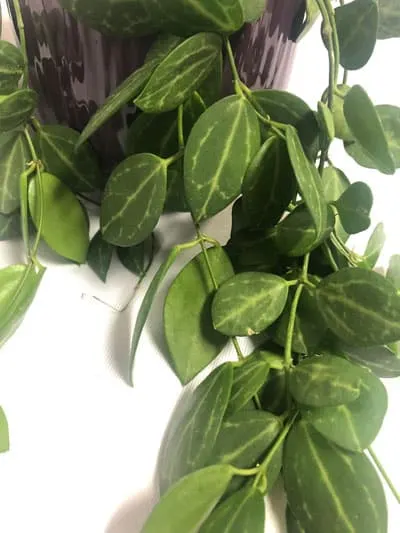
Although it is growing well, because I’m careful with watering, it would not be my first choice to grow these in straight potting soil.
Once I repot it, I will make it a chunkier mix by adding some orchid bark to potting soil. You can also even grow these in a fine to medium grade orchid bark mix, or even in straight chunks of coconut husk.
I have a Dischidia nummularia growing in just plain coconut husk chunks and it is doing great!
WATERING
If you have these growing in soil, make sure that you let the soil surface dry before you even think about watering again.
These plants are pretty drought tolerant so don’t worry if you let them completely dry out. Just don’t wait too long to water it!
If you have your plant mounted, you will find that it will dry out really quickly and will need watering much more frequently.
You can use a mister to spritz your plant frequently and you’d likely have to do it multiple times a week. It is pretty difficult to overdo watering on mounted plants because they dry out very quickly.
Finally, if you have your plants growing in a chunky orchid bark mix or coconut husk chunks, the watering scenario will be somewhere in between the two described above.
Just use your finger, and do let your potting medium dry out partially, whatever you choose to plant it in.
FERTILIZING, TEMPERATURE AND HUMIDITY
These are not heavy feeders, but I’d recommend fertilizing with an all-purpose houseplant fertilize, dilutely, from Spring to Fall.
My absolute favorite all-purpose fertilizer to use is Dyna-Gro Grow and you can purchase it on Amazon.
It is my favorite fertilizer that I’ve used for numerous reasons. My plants grow incredibly well, and it contains all the micro and macro nutrients that your plants need.
Being a premium fertilizer, it costs a little bit more, but aren’t your plants worth it??? You’ll be amazed at the difference in your houseplants if you include regular fertilization in your routine.
Although they do like higher humidity, Dischidias are very tolerant of average household conditions. It never hurts to increase humidity though and I would recommend it if you can (especially in the winter!)
If you are comfortable indoors, your Dischidias will be too.
DISCHIDIA OVATA PROPAGATION
Like I described earlier on in this post, these plants will form roots along every node (where the leaf meets the stem).
You can see little roots growing at the node where my finger is below:
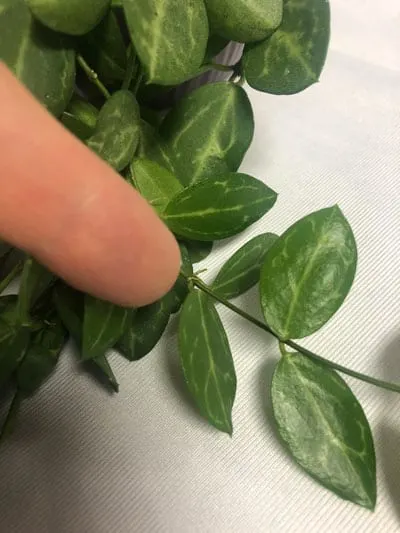
I’ve propagated cuttings of Dischidia ruscifolia, or Million Hearts Plant, in water before and then transferred to coconut husk chunks. Be sure to change the water frequently to keep it fresh.
You can also take cuttings and place them directly into your potting medium, whatever you choose to grow them in, to root.
Keep in mind that you will want to keep the medium a little more moist than usual to encourage rooting. Since they are epiphytes, misting them frequently will help encourage rooting.
DISCHIDIA IN TERRARIUMS
Dischidia ovata also does well in terrariums. It should be mounted and placed higher up in the terrarium so that it cascades down.
You can also easily propagate and mount ovata cuttings on a piece of wood in your terrarium.
Take cuttings of your ovata. Presoak some sphagnum moss and squeeze out excess water.
Wrap the moss around one or two nodes of each cutting. You can take the leaves off of the nodes that you are wrapping the sphagnum moss around.
Then take some clear fishing string and securely wrap the cuttings that you’ve wrapped the base in moss to your branch in your terrarium.
In time, it will root and then secure to the branch. You can then cut the fishing string off.
OTHER DISCHIDIA SPECIES
I have two other Dischidia species that I love, and have written blog posts on those so be sure not to miss those!
Dischidia ruscifolia, or Million Hearts Plant, has cascades of delightful heart shaped leaves. It forms tiny white flowers that are surprising fragrant!
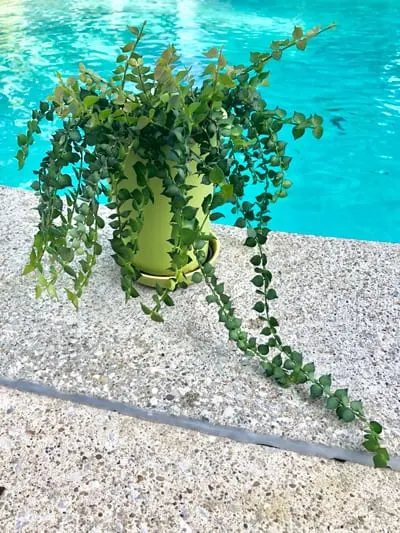
Dischidia nummularia has smaller, thick and round leaves that look like little green coins. A full nummularia is quite visually striking.
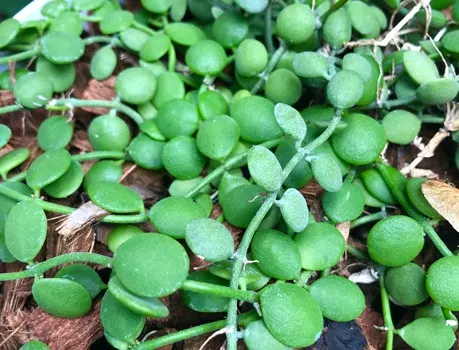
Whatever species you choose, they are sure to make wonderful houseplants. I have enjoyed all of mine immensely!
Do you have any Dischidia? Comment below with any questions!

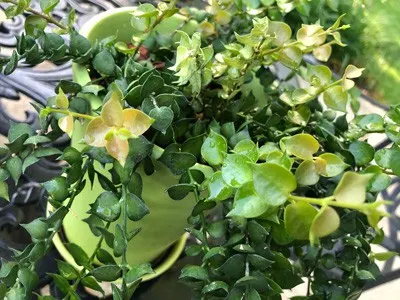
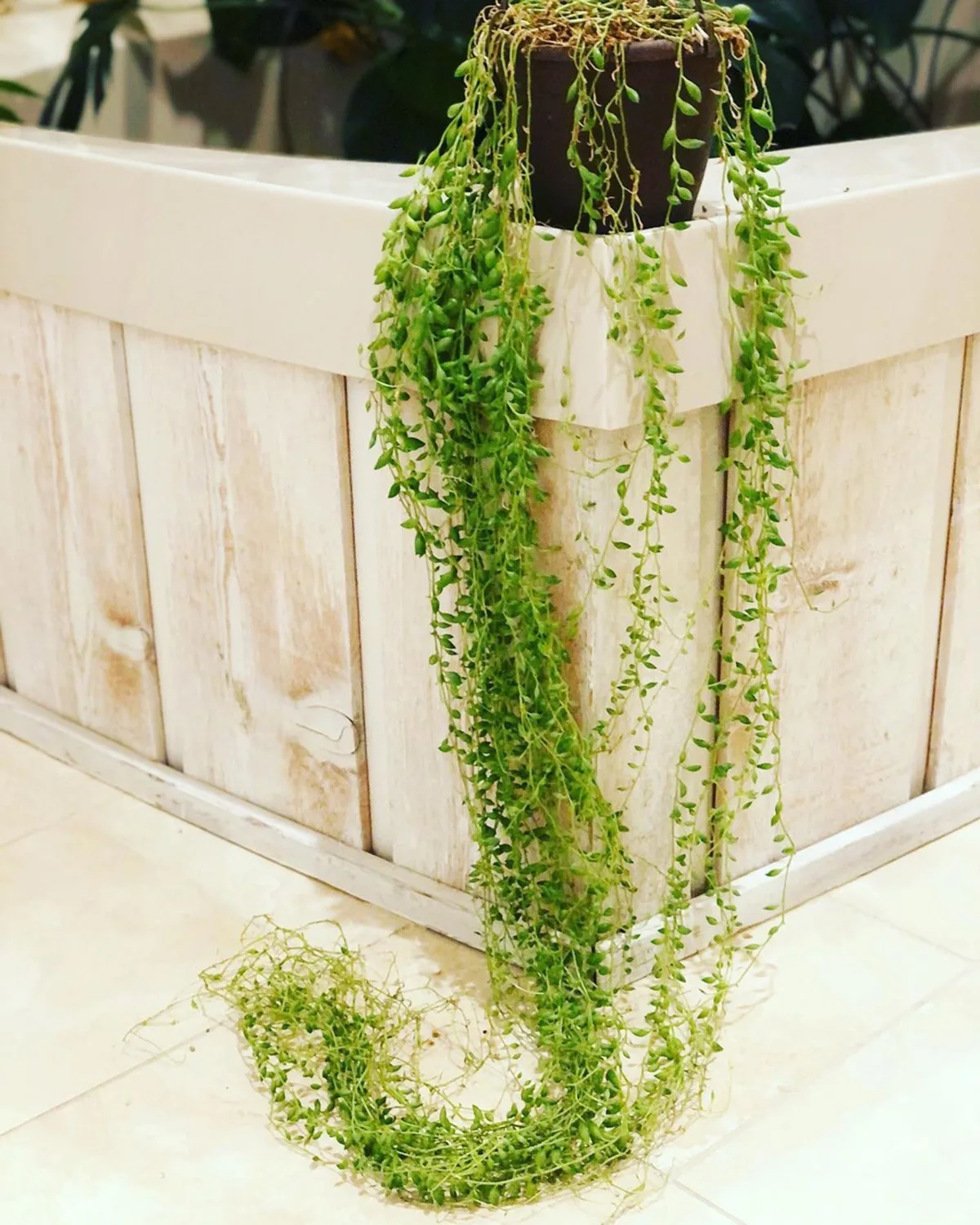
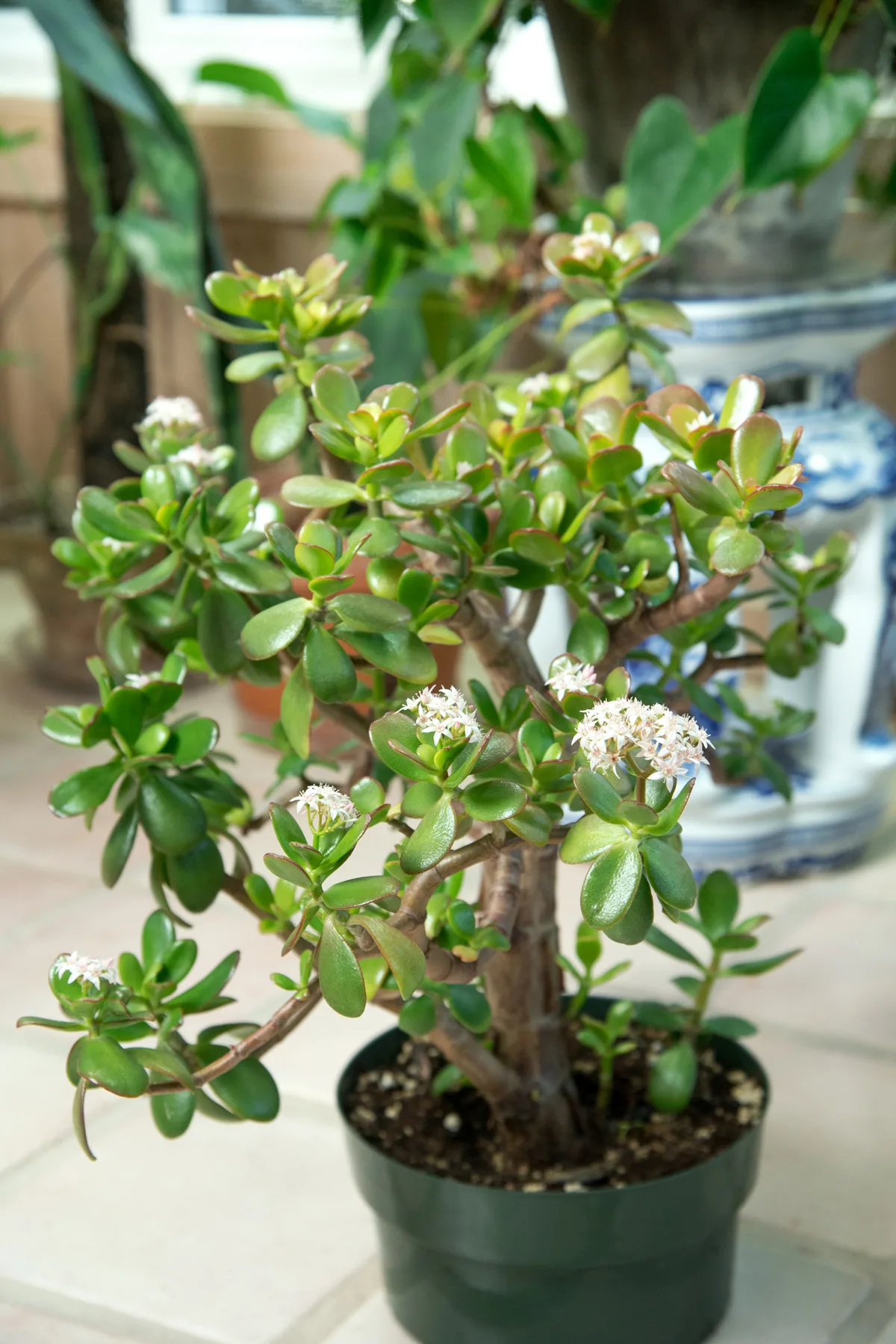
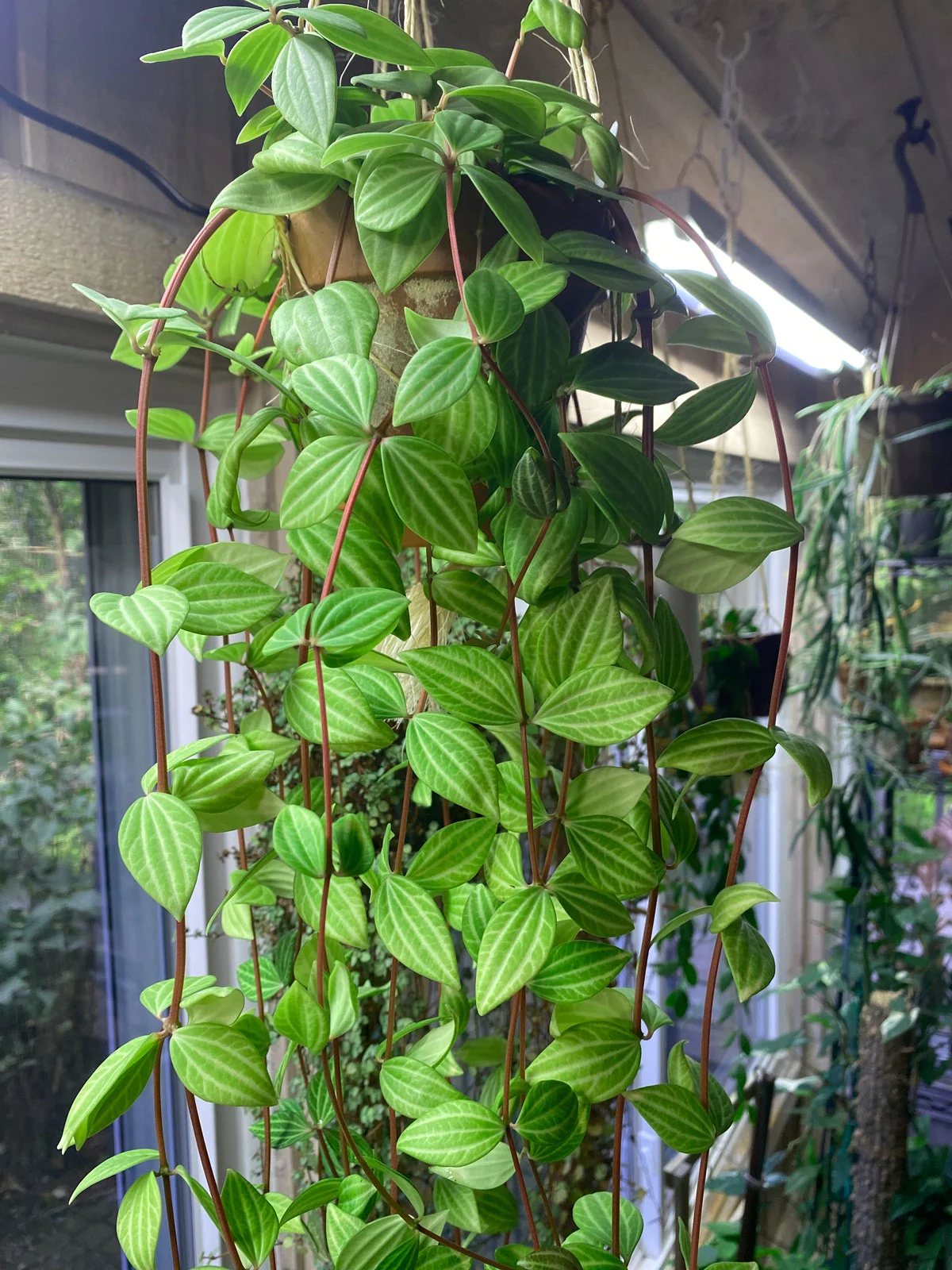
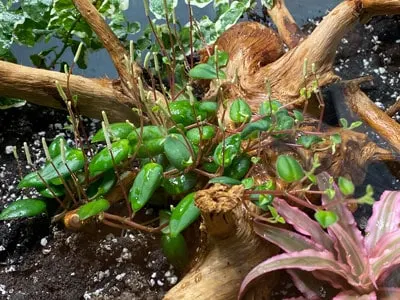
Deborah Haifley
Thursday 16th of May 2024
I got the watermelon plant for Mothers Day. It's been outside hanging. It has tons of 2-3 " little spikes, I brought it inside today and decided to research it. I've never had 1 before. I have it sitting with my other plants. There's a grow light, the one that acts as artificial sunlight. But I don't know how to spell it. It's in a 7 1/2" x 5 1/2" pot. Looks pretty tight in there. Any advice ?
Raffaele Di Lallo
Friday 17th of May 2024
Hi Deborah, it would help to see photos. If you want to use the contact form on my website to email me...when I respond, you can attach photos and I can take a look.
Jessica
Friday 16th of June 2023
Do you think this plant would like a plastic orchid pot? Trying to decide what to pot my rooted cuttings in.
Chanida
Sunday 25th of October 2020
How long should the roots be when propagating before I plant them in soil? Thanks !
Raffaele
Sunday 25th of October 2020
I would place them into soil once the roots get about 1/2 inch to an inch long or so. No need to wait any longer :-).
Claire
Friday 21st of August 2020
Hi! I recently purchased some string of nickels cuttings. I have them in chunky orchid mix but they don’t seem to be rooting. Any advice oh how to speed up the process? I have been looking for this plant for a year and would be devastated if the cuttings died.
Raffaele
Thursday 27th of August 2020
The only other thing you can do is it use a rooting hormone to help speed things up. Keeping warm and humid conditions will also help speed things along.
Jackie Pearce
Thursday 20th of August 2020
Very well done! These are pretty rare where I am and wondered if you had seeds for sale or if you had even tried growing from seed? thanks heaps Jackie
Raffaele
Thursday 20th of August 2020
Hi Jackie! I've never grown these from seed. I believe I got my plant from Steve's Leaves.